I’ve been putting information and photos of my insect finds on our new blog: Bugfolks.com.
It’s nice to have a place to put pictures where people who are interested in insects will see them. I’ve found some wonderful bugs in the last week, so go check it out! And please join us at Bugfolks if you’re interested in observing and learning about insects! There’s a list serve, as well as the blog.
I visited our neighbor Emmet this week – he showed me his “wildflower garden”, and his native bluff prairie.
He planted the wildflower garden from a seed mix. Like most commercial “wildflower” mixes, it contained seeds of mostly non-native plants, and mostly annuals, but they came up and bloomed, and they’ve attracted a lot of butterflies. We had a good time chasing and photographing butterflies.
Here’s Emmet with his garden.
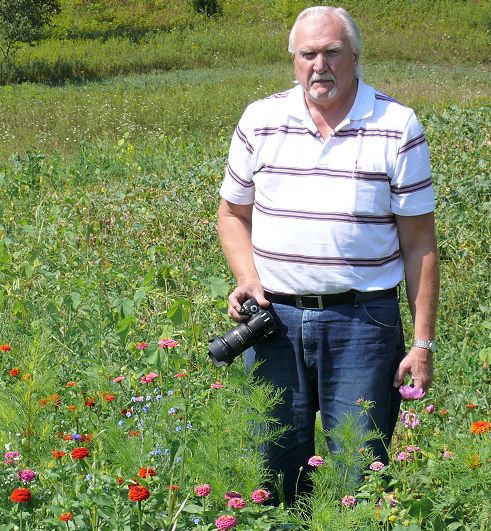
The garden, with butterflies.

Leonard’s Skipper on Zinnia
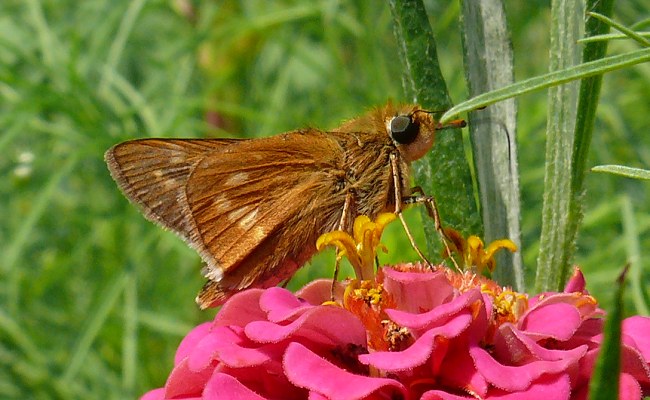
An old, tattered Painted Lady
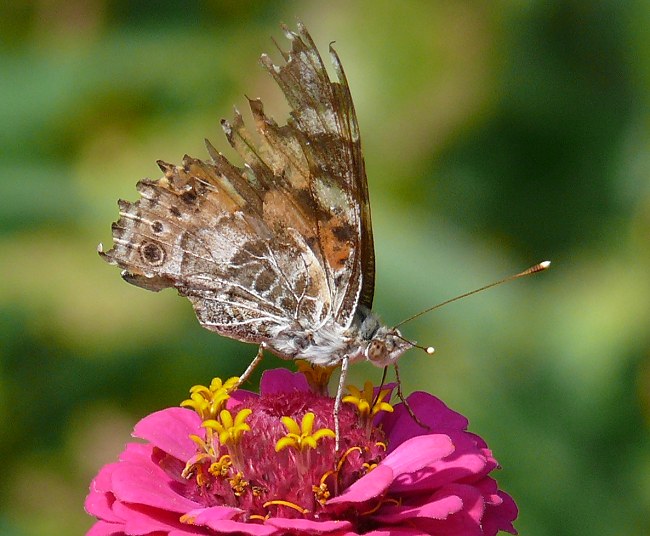
Two Fritillaries – Great Spangled (left) and Aphrodite (right)
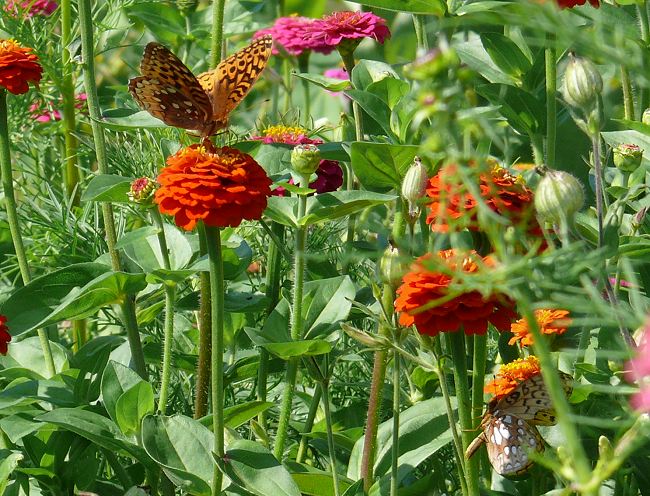
Emmet has a tiny remnant bluff prairie that overlooks the valley. This is the prairie – with lots of Gray Goldenrod blooming.
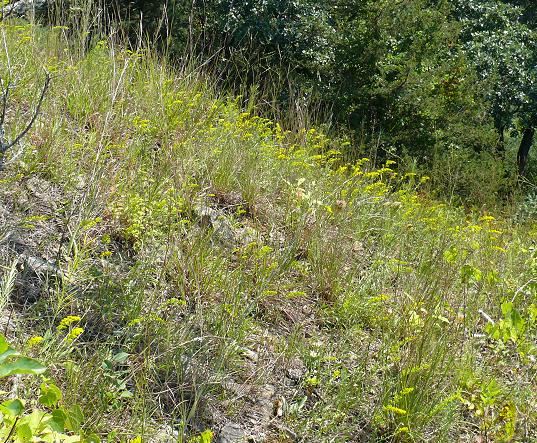
This is the view of the valley from his prairie.
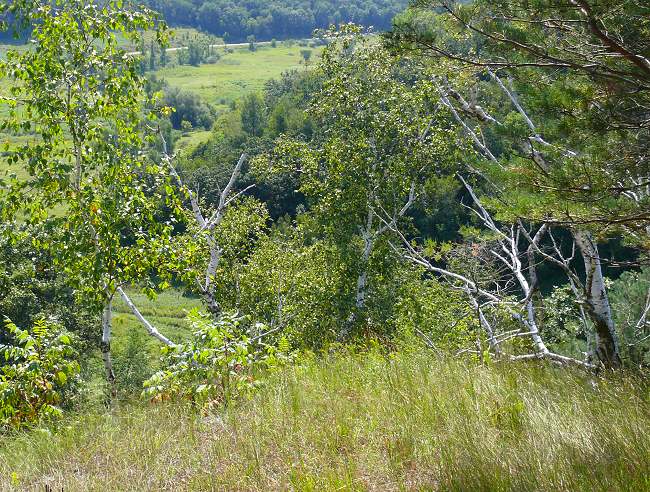
And here’s Emmet, looking down on his prairie.
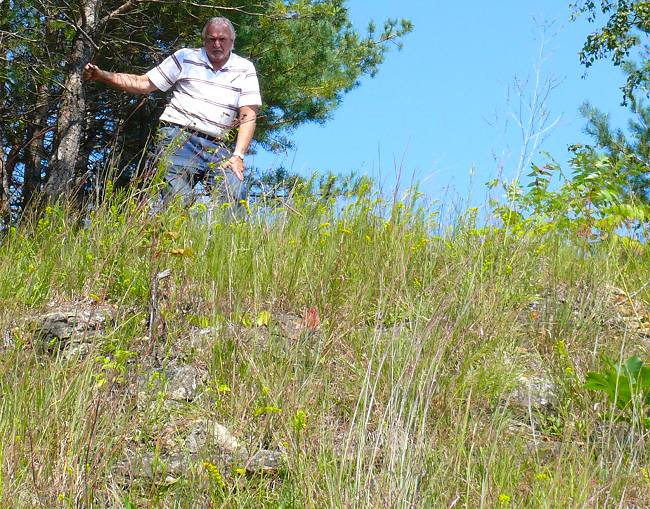
It’s really fall now on our prairies – the fall flowers are starting to bloom.
We have several species of Gentians.
White Gentian (Gentiana alba)

Bottle Gentian (Gentiana andrewsii)
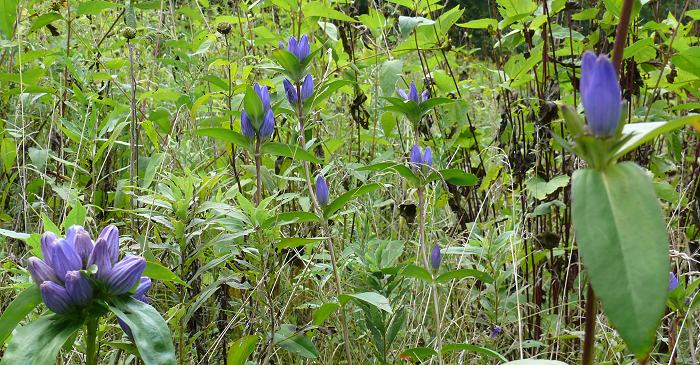
And Great Blue Lobelia (Lobelia siphilitica)

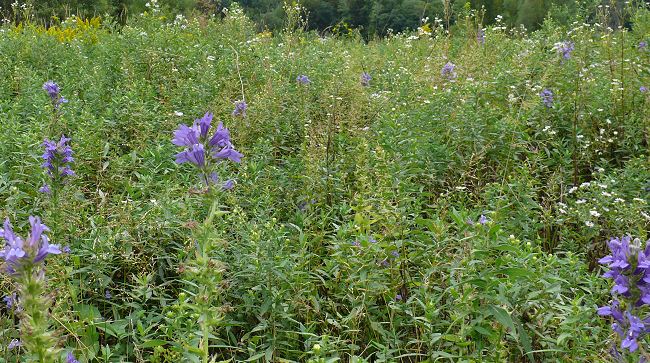
I found another new plant for the farm this week – Winterberry (Ilex verticillata). It’s a species of Holly – the only one that grows in this part of the state.
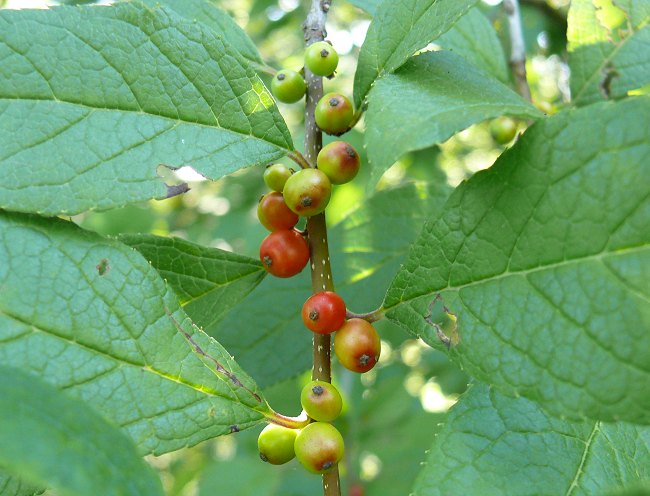
There aren’t as many butterflies now – the weather is getting cooler. There are still Giant Swallowtails nectaring on the thistles.

And I’m still finding Giant Swallowtail caterpillars.
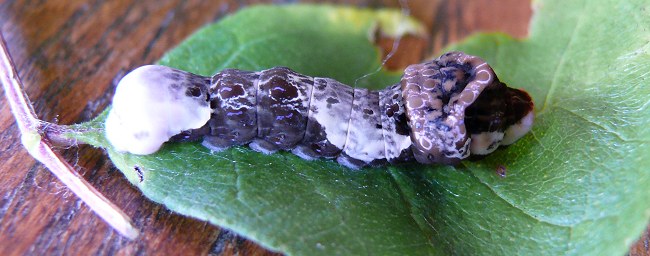
A Red Admiral
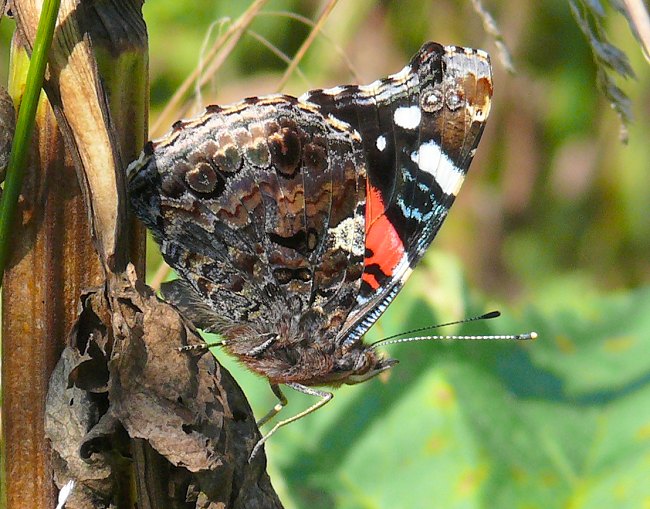
An Eastern Tailed Blue
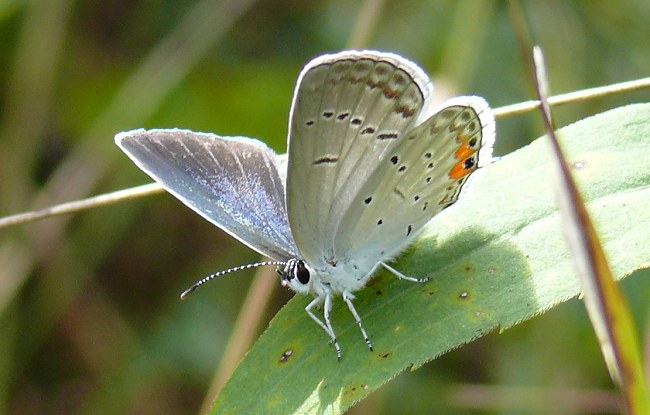
The most common skipper I’ve been seeing is Leonard’s Skipper. It’s a fall skipper that especially likes nectaring on Blazing Star – but it also likes thistles.
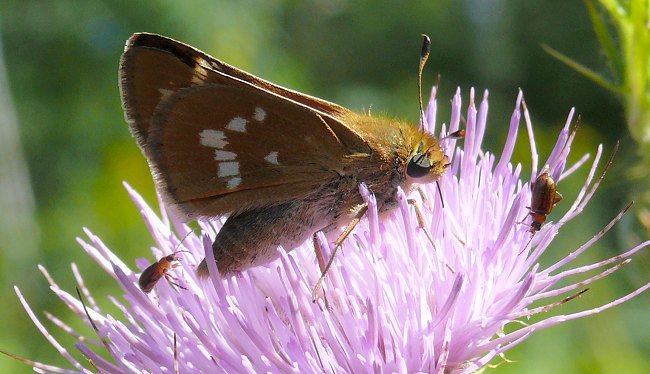
Three of my Luna cocoons hatched. Ian says that Lunas sometimes try to do two generations in our short summers. This is too late for them to complete the second generation, so they’ll die. It was fun to see them, but I felt bad that I couldn’t help them through it. I released them all.
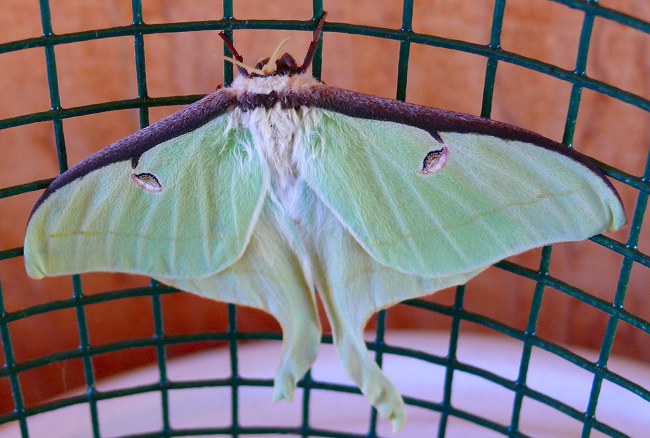
Several people who have Polyphemus moths had some hatch, but none of mine have. It may be because it’s colder here at the farm – night temperatures in the city are much higher.
We’ve seen signs that a Black Bear has been around lately. We found one of our bluebird boxes pushed over, and two large piles of scat, and one of our benches pushed over. We haven’t seen the bear.
The bench

Some scat that looks large enough to be bear scat

One of the projects I’ve been working on is cutting and killing the brush that has overgrown sumac prairie. This is what it looks like before cutting – mostly sumac, prickly ash, aspen and brambles.

I’ve been trying a couple of different methods of clearing – I hope to figure out in a few weeks, which one works best.
While I was up on Sumac Prairie, a flock of Cedar Waxwings came down to eat honeysuckle berries in the woods. Here’s one of the Cedar Waxwings.

And here are some of the berries. I’d like to get rid of all the honeysuckle – it’s not native – but it’s a long, slow process. In the meantime, the birds enjoy it.
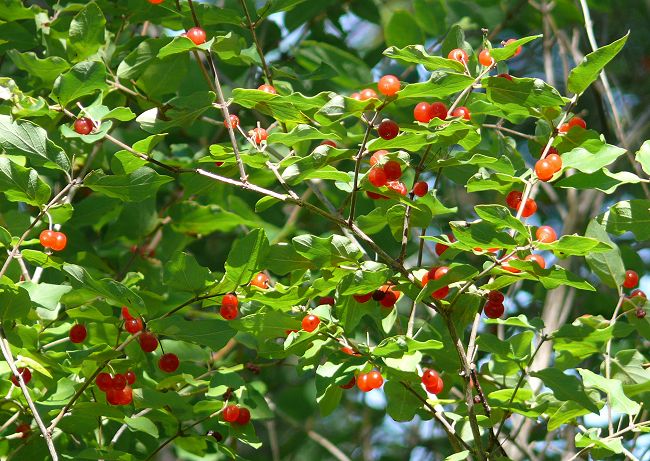
Here are some pictures of the farm from the last week. The colors of the plants and the skies are beautiful right now.
3 Finger Valley

Cat’s Paw Prairie

Cat’s Paw Prairie

Woods below Starflower Opening
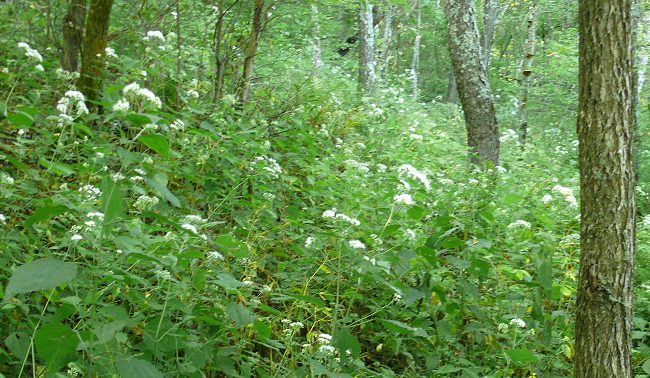
Gray Golderod on Hidden Oaks Prairie
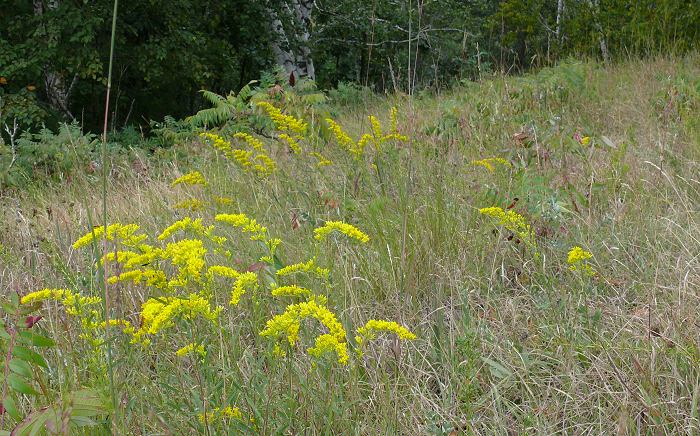
Knife Edge Prairie with Goldenrod and Rough Blazing Star (Liatris aspera)
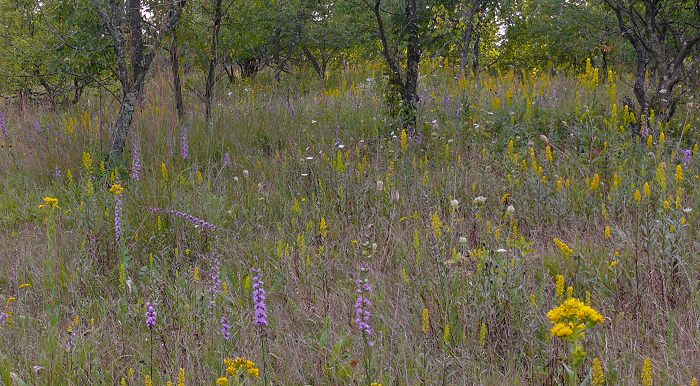
Field Thistles (Cirsium discolor) in 3 Finger Valley
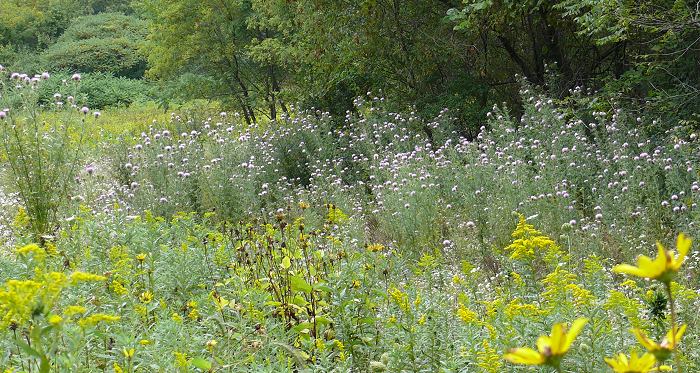
View from Knife Edge Point

